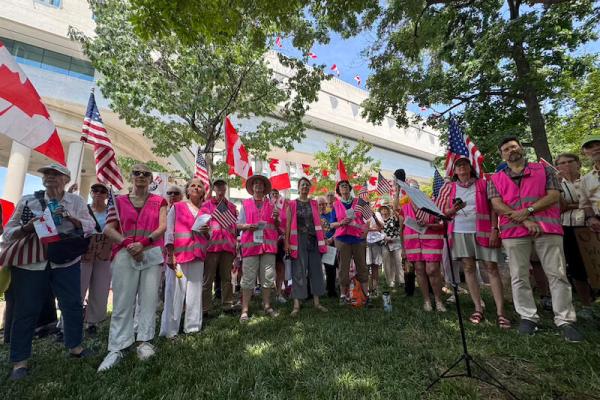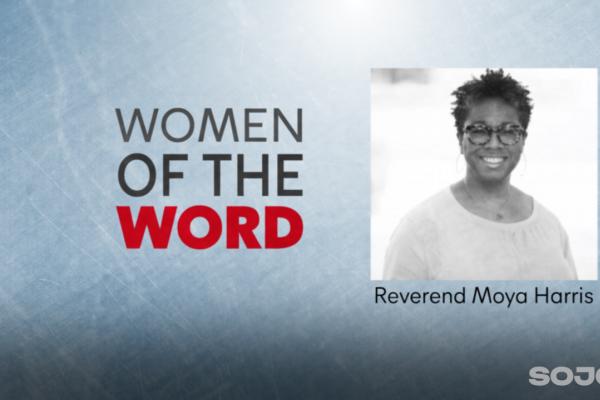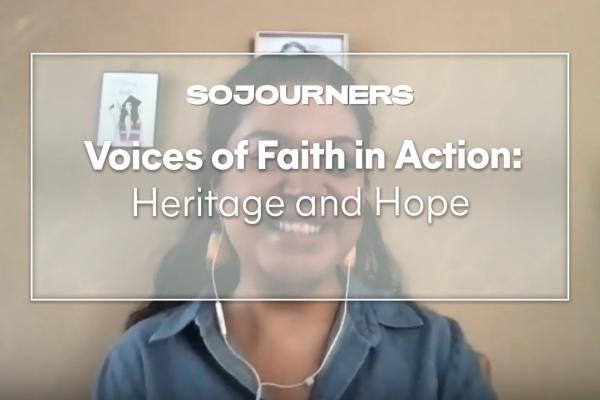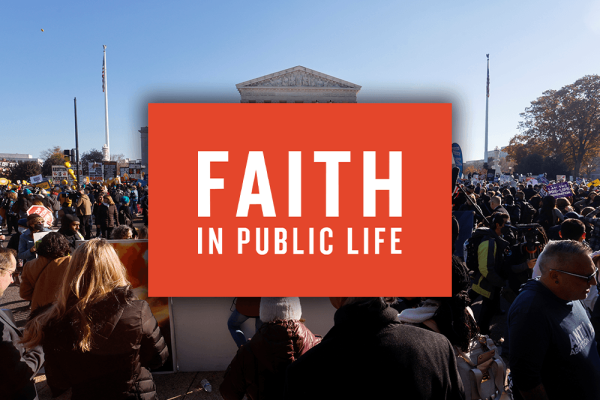YOU NEVER KNOW where you’ll see the hands of Christ.
In central Kyiv, a mural depicting two elegant hands breaking a sword is surrounded by towering apartment buildings. Painted in 2016 by Ukrainian artist Sergii Radkevych, “Fragments of Hope” was one of a series of murals organized in response to the 2014 conflict in eastern Ukraine. It was public art on a mission to inspire a Ukrainian vision for peacemaking.
Radkevych combines religious iconography with street graffiti and realism. He pays particular attention to expressive hand gestures. “Fragments of Hope” became a frequent gathering point for protests in solidarity with eastern Ukrainians in 2017 and 2019. “This is my manifesto against violence and cruelty, a call to mutual understanding,” said Radkevych at the time. When I was in Kyiv in May, after more than three months of intensive Kremlin-led violence, I was grateful to find the mural still standing.
Ukraine has more than 100 years of experience in nonviolent action. From 1917 through the courageous resistance to Putin’s military aggression today, Ukrainians have forged a national identity founded on consent of the governed. If the people do not consent to the actions of the government or an invading force, then the society resists through unarmed acts of expression, omission, and commission. Because of this vibrant and skilled civil society, most acts of Ukrainian civil resistance over the past century have been nonviolent.
In an October report by the International Catalan Institute for Peace, author Felip Daza Sierra wrote that of the 235 nonviolent actions in Ukraine investigated during six months of war, “148 would fall into the category of ‘protests’ (acts of expression), 51 actions in the category of ‘non-cooperation’ (acts of omission), and 36 actions of ‘nonviolent intervention’ (acts of commission).”
Daily public demonstrations in southern and eastern Ukraine, especially in temporarily occupied areas, have been widespread and extremely risky. Examples include hanging Ukrainian flags, taking down Russian flags, singing the Ukrainian national anthem, holding public interfaith services in Ukrainian, telling Russian soldiers to “go home,” and sending Ukrainian flags up on helium balloons. In Melitopol, according to Daza, people gathered at the Orthodox church to organize demonstrations. After Mass, parishioners poured into the main square with their priest to protest Russian occupation. In Slavutych, the city built for evacuated Chernobyl workers, citizens showed up en masse after the mayor announced the occupation of the town. Their rapid response forced immediate negotiations with occupying forces. Two days later, the Russian troops left.
As Russian forces cracked down on large public demonstrations in occupied regions, individuals and small groups employed tactics of noncooperation. For example, in Kherson and Berdyansk, Ukrainians refused Russian humanitarian aid and set up systems to receive aid from Ukraine. Farmers refused to sell grain to occupiers. Public school teachers resigned rather than teach students the Russian-imposed curriculum. Medical personnel refused to turn over their personal data to Russian census takers. Whole city councils have resigned and refused to support infrastructure for invading forces. People are refusing to pay taxes, refusing to broadcast Russian propaganda, and refusing to show identity cards. All are examples of the “10 commandments” of nonviolent noncooperation, perfected by the Czechs in resisting the 1968 Soviet invasion of Czechoslovakia.
The most dramatic acts of nonviolent intervention have been broadcast around the world: Ukrainians blockaded Russian tanks and military convoys; constructed barricades; coordinated alternative communication systems through secure social media platforms; engaged in collaborative mapping to identify danger and safe zones; and built parallel forms of self-governance, including schools, local governments, and banks. Local Orthodox priests provided protection and safe passage for civilians from conflict zones. With all these actions, Ukrainians are resisting the institutionalization of occupation and thus thwarting Putin’s goals.
Resistance to evil comes at a cost. Hundreds of Ukrainian protesters and civilian organizers have been shot, killed, or disappeared. In late September, Rev. Leonid Ponomaryov, pastor of a Baptist church in temporarily Russian-occupied Mariupol, and his wife, Tatyana, were taken by armed masked men and accused by Russian officials of “extremist activity.” As of this writing, they are still missing.
In Russia, the resistance is harder to document, but is occurring. In September, President Putin began drafting Russians for military service, and the resistance was swift and large. “The scale of the recent exodus is enormous,” wrote David Cortright, author of Soldiers in Revolt. “Nearly 100,000 Russians entered Kazakhstan ... and large numbers entered Turkey and Armenia. More than 50,000 crossed into Finland before the border was closed, double the rate of previous weeks.” At least two resisters to Putin’s conscription sailed the Bering Sea to land on a remote island in Alaska, where they requested asylum.
One never knows where the hands of Christ will be found. Every hand that held a Ukrainian flag, refused to pull out an identity card, lifted a can of paint for a mural, or guided a boat across the open ocean acted in peaceful resistance. And each act is how we break the sword in Christ’s name. War makes us blind. Blind to the good. Blind to the humanity of the other. Perhaps that’s why Radkevych also included Braille text in the corners of his mural. For those who can read it with the tips of their fingers, it says “hope.”
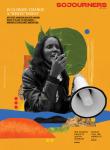
Got something to say about what you're reading? We value your feedback!


